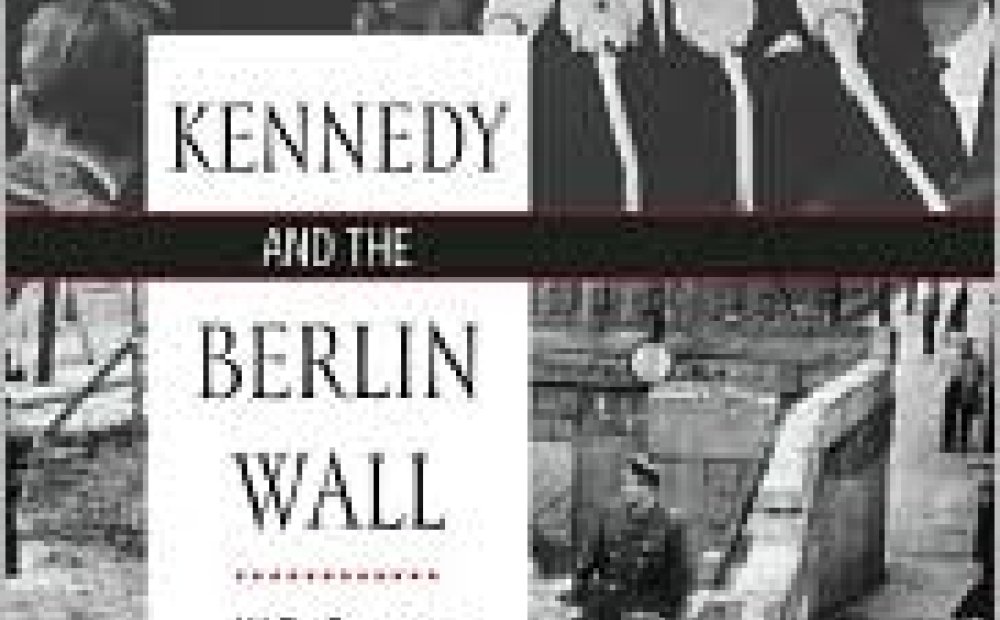Kennedy and the Berlin Wall: A Hell of a Lot Better Than a War

By way of introduction, Bernd Schaefer argued that the Berlin crisis of August 1961 was a central moment in the Cold War and a defining moment for the John F. Kennedy Administration. The construction of the Berlin Wall created a physical, concrete representation of the struggle between the United States and the Soviet Union. Its historic fall in November 1989, under the pressure of the East German demonstrations and TV camera lights marked, in the hearts and minds of an entire generation, the quasi-official end of the Cold War in Europe.
W.R. Smyser's book Kennedy and the Berlin Wall: a Hell of a Lot Better than a War is based on the author's personal experiences at the U.S. Mission in Berlin in the early 1960s, as well as his extensive research since he left the government. He identified four key dates in the Berlin Crisis and explained their importance for the Kennedy Administration and the Cold War. Kennedy and Khrushchev first met at the Vienna Summit on June 3-4, 1961. Khrushchev, Smyser argued, bullied Kennedy because the Soviet leader saw the president's handling of the Bay of Pigs invasion as a sign of weakness.
The second key date, August 13, 1961 was the day that the East Germans began building the Berlin Wall. Smyser, having been alerted at the time to "strange" activity in East Berlin, recalled driving around the city in the early morning and seeing preparations for construction and an increased police presence on the streets. The title of the book derived from Kennedy's response to the news that the East Germans were building the Wall: to Kennedy it was "a hell of a lot better than a war." Despite the president's belief that the situation in Berlin would not lead to a military confrontation with the Soviets, public pressure forced Kennedy to protest the building of the Wall. To show US resolve, Kennedy sent General Lucius Clay, head of the US military government after the war, to Berlin. Smyser worked as Clay's assistant and witnessed the Checkpoint Charlie stand-off on October 22, 1961, the third important moment in the ongoing crisis. Clay used the stand-off to find out whether the Soviets were willing to start an armed conflict over the completion of the Wall, and to establish America's resolve to save Berlin.
Smyser identified the Cuban Missile Crisis of October 1962 as the fourth important event because the conflict stemmed partly from the fact that Khrushchev operated under the assumption that Kennedy would agree to missiles in Cuba since he had not been tougher in Berlin. According to Smyser, Clay was convinced that if Kennedy had acted more boldly in Berlin, the Cuban Crisis could have been avoided. However, the end of the crisis brought with it the conclusion on both sides that such conflicts should be avoided in the future. Kennedy's visit to Berlin in June 1963 was a triumph that reaffirmed American support for the city.
Mary Beth Stein noted that both the construction and the destruction of the Berlin Wall related to keeping East Germans from escaping, first through West Berlin, and then, later, through Eastern Europe. She commented that Smyser's book was engaging and concise, but that it may have benefited from more of the insider's perspective that Smyser could provide. Stein asserted that Kennedy kept West Berlin because of Clay's efforts and understanding of both the Soviets and Berliners. She also pointed to Willy Brandt's policy of Ostpolitik, and his efforts to bridge the gap between East and West, as another defining factor in the eventual collapse of the Wall and the reunification of Germany.
Personal experience provides colorful insight to history, argued R. Gerald Livingston, who served with Smyser at the U.S. Mission in Berlin and praised him for balancing the personal with the historical. He mentioned a few topics that he thought should be discussed more broadly, including the fact that Khrushchev was at the apex of his power in 1961 and so felt that he could bully Kennedy, as well as the fact that the Berlin press critically recorded every American move. Livingston pointed to the 1961 West Berlin election campaign between Brandt and Adenauer, and the second détente-oriented speech that Kennedy gave in Berlin at the Free University in 1963, as subjects that should be more widely covered. He further discussed the flawed assessments given to Kennedy by his Soviet-hand advisers, as well as the issue of Kennedy's age, as significant factors in the crisis. Finally, Livingston suggested, the courage of the Berliners, which General Clay knew so well, was important in the resolution of the crisis.
Drafted by Amy Freeman and Tim McDonnell
Christian Ostermann, Director, HAPP/European Studies
Hosted By

Global Europe Program
The Global Europe Program is focused on Europe’s capabilities, and how it engages on critical global issues. We investigate European approaches to critical global issues. We examine Europe’s relations with Russia and Eurasia, China and the Indo-Pacific, the Middle East and Africa. Our initiatives include “Ukraine in Europe”—an examination of what it will take to make Ukraine’s European future a reality. But we also examine the role of NATO, the European Union and the OSCE, Europe’s energy security, transatlantic trade disputes, and challenges to democracy. The Global Europe Program’s staff, scholars-in-residence, and Global Fellows participate in seminars, policy study groups, and international conferences to provide analytical recommendations to policy makers and the media. Read more


Cold War International History Project
The Cold War International History Project supports the full and prompt release of historical materials by governments on all sides of the Cold War. Read more


History and Public Policy Program
A leader in making key foreign policy records accessible and fostering informed scholarship, analysis, and discussion on international affairs, past and present. Read more
